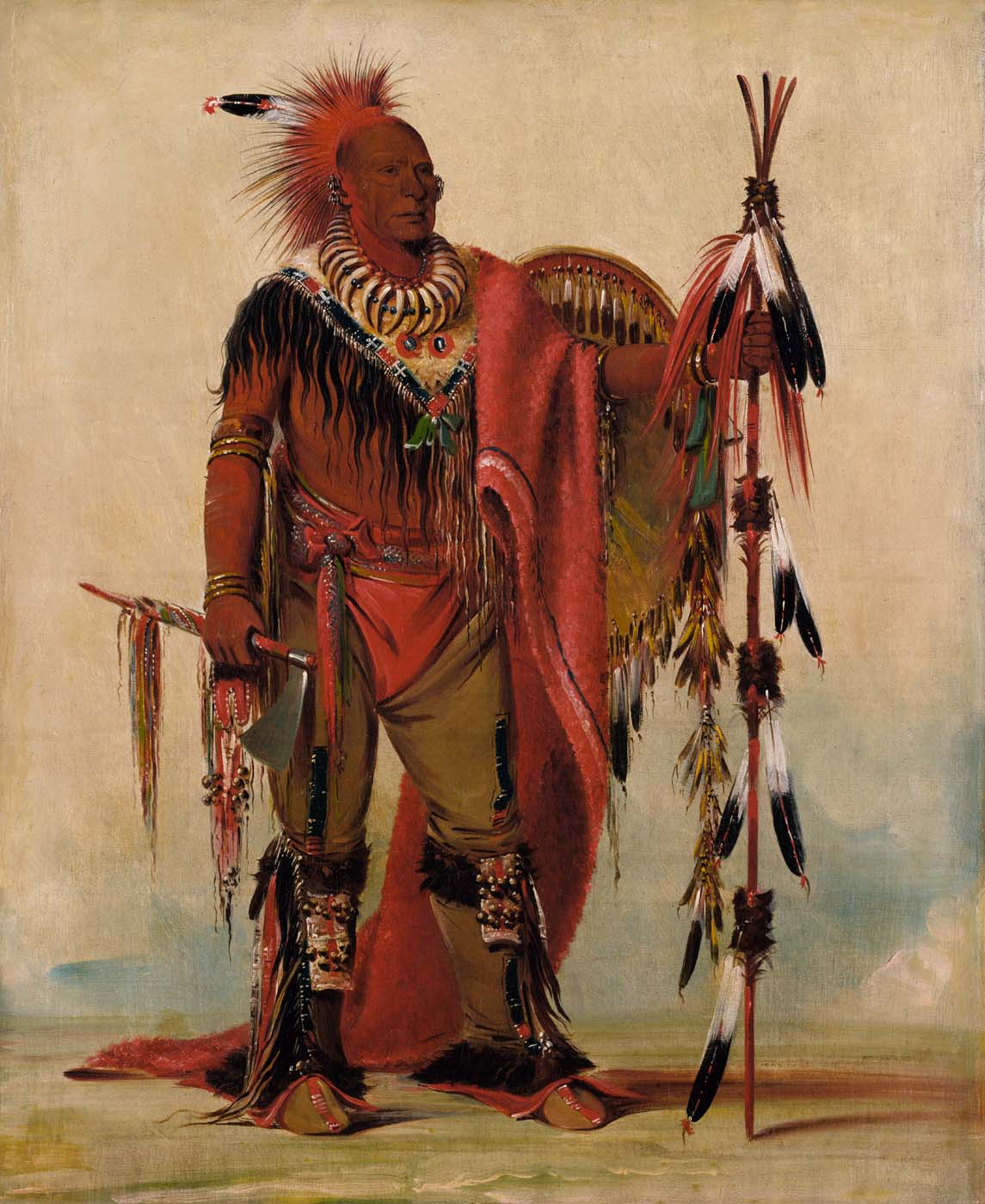Kee-o-kük, The Watchful Fox, Chief of the Tribe

George Catlin painted Kee-o-kúk at the Sac and Fox village in 1835. He described the chief as a “vain man” who was very pleased with his portraits, including this version. He wears an elaborate costume of white buckskin leggings, a red blanket, and a bear-claw necklace. Two years later, in 1837, Catlin brought Kee-o-kúk to Washington, where the artist showed his portraits, hoping the government would buy his Indian Gallery. During this visit, a journalist for the New York Evening Herald described the chief as a “fine and noble looking man.”
Kee-o-kúk thought it useless for his people to fight the United States government. Instead, he signed over lands in the states known today as Illinois, Missouri, and Wisconsin, for which his tribe received about seventy-five cents per acre. Catlin noted that the Sac and Fox “have sold so much of their land lately, that they have the luxuries of life to a considerable degree . . . they look elated and happy, carrying themselves much above the humbled manner of most of the semi-civilized tribes, whose heads are hanging and drooping in poverty and despair.” (Dippie, Catlin and His Contemporaries: The Politics of Patronage, 1990
- 624
- Other objects by this creator in this institution
- 312
- Objects by this creator in other institutions